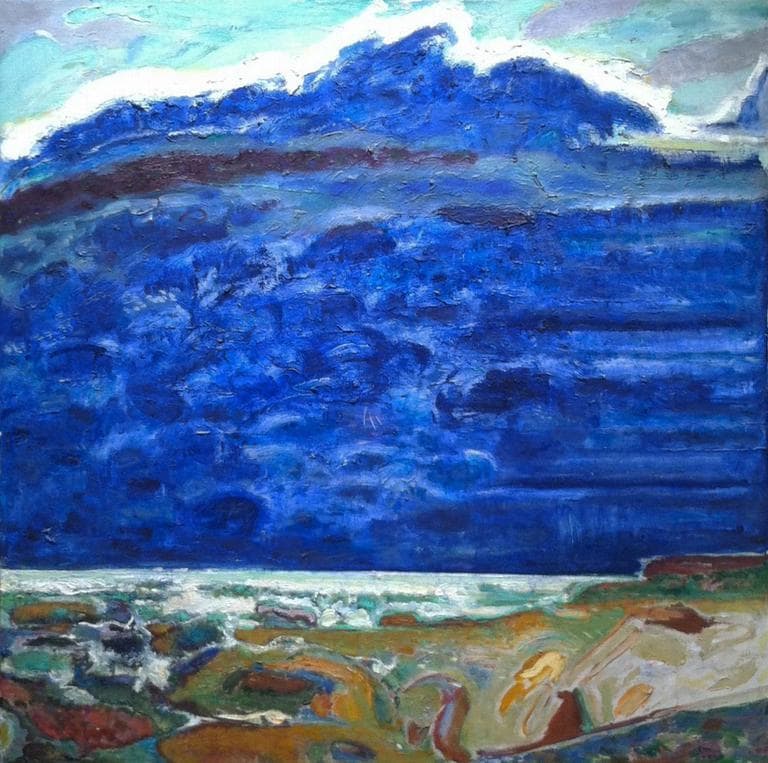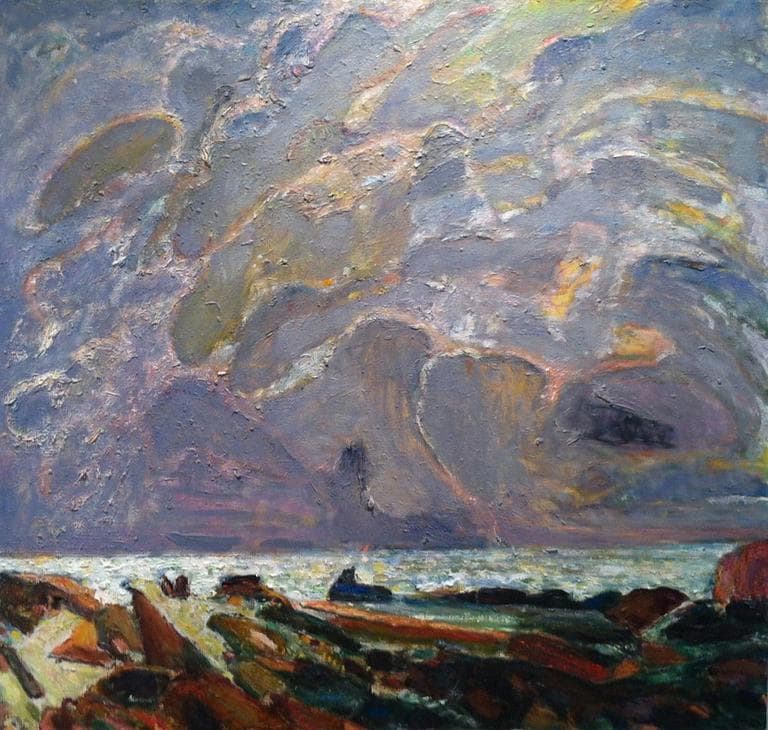Advertisement
Bernard Chaet’s Far Horizon

When painter Bernard Chaet died on Oct. 16 at age 88, Alpha Gallery, which had been planning a solo show of his work for December turned it into a mini overview of his career. And the news from that exhibit, “A Life in Art” at the gallery (37 Newbury St., Boston, through Jan. 9), is that in his last decade, focusing on the shore and sea of Cape Ann he painted the best canvases of his life.
Chaet (1924-2012) grew up in Boston’s Dorchester neighborhood and studied at the School of the Museum of Fine Arts and Tufts University. Early on he found inspiration in Boston Expressionism, a psychologically charged style of Modernist realist painting that emerged here in the 1930s and ‘40s.
In the 1950s, he experimented with abstraction. In the 1970s and ‘80s, he painted still-lifes and studio portraits in a stripped-down, flat realism. But again and again he returned to landscapes and seascapes painted with an expressionist realism.
His oil paintings tended to exhibit a sturdy competence, but undistinguished vision. His expressionist stylizations could be formulaic. Cows he painted grazing in hot hued fields — a signature motif over the years — tended to be caricatures, not animals carefully observed and fully felt. He was best known for teaching art at Yale University in Connecticut from 1951 to 1990 and authoring the influential 1970 book “The Art of Drawing.”
But as early as the 1960s, Chaet began summering at Cape Ann. After his retirement, he often split his years between Connecticut and there. Cape Ann’s rugged shore became a primary subject. He favored a few locations, particularly Bass Rocks in Gloucester and Pigeon Cove in Rockport, painting them again and again.
“They hit me in a way I can’t solve,” he told Alpha Gallery Director Joanna Fink in 1997. “I know what they look like and what I’ve missed in them. … They’re inside me. And when I’m painting there I feel a release that I’m trying something that I have to do because I haven’t finished my thoughts about these places.”
Over the past decade, Chaet assimilated and digested his influences (Paul Cezanne, Wassily Kandinsky, Ferdinand Hodler, Hyman Bloom) and his own various styles. Out of this compost emerged sensational late paintings.

The change is most evident in the way he painted skies. In the past, his gaze was often downward, onto the shoreline rocks. He painted the boulders directly — each brushstroke delineating part of the stone. But in the past 10 years, it seems his horizons moved lower and his skies got bigger. The effect is something like emerging from the tight, winding streets of Gloucester onto the shore, where everything suddenly opens up and out, and your view expands to infinity.
Chaet’s paintings become focused on flaming suns and the ravishing choreography of clouds. His method adjusted as well. His 2008 painting “Blue” is dominated by roiling but joyous ultramarine blue storm clouds. The last bit of sunlight before the storm darkness spotlights a stripe of emerald green sea that froths over the dashed in foreground rocks.
In his 2004 to 2006 oil painting “Breaking Out,” a band of jutting, rusty brown shoreline rocks are still painted directly, but the sky is built up in layers. Turbulent clouds are fashioned from pale lilac paint that seems to be scrubbed atop thick, chunky white, yellow and pink, colors which continue to glow through from underneath.
The impasto buildup of paint recalls the cement-like clouds of Marsden Hartley’s raw, roughhewn late style, which he pioneered during summers at Gloucester in the 1930s. Chaet also seems to be channeling the vivid meaty textures of Boston Expressionist Hyman Bloom’s corpse paintings of the 1940s—work which influenced him when he was a young student in Boston. But Chaet’s colors are now filled with emotion, and effervescent.
This program aired on January 4, 2013. The audio for this program is not available.
